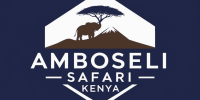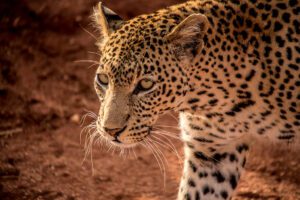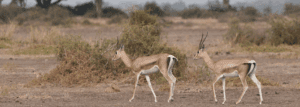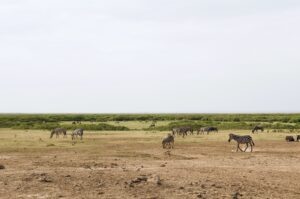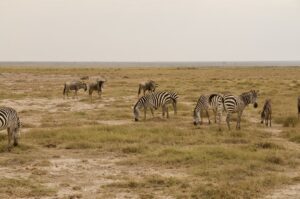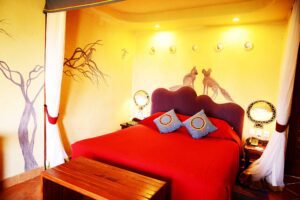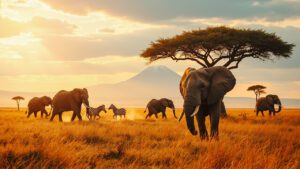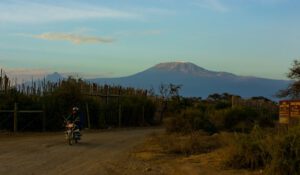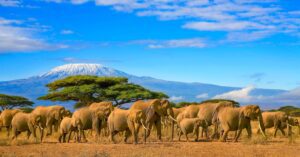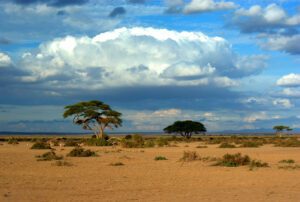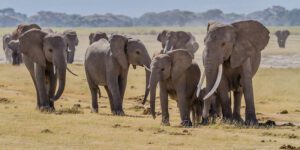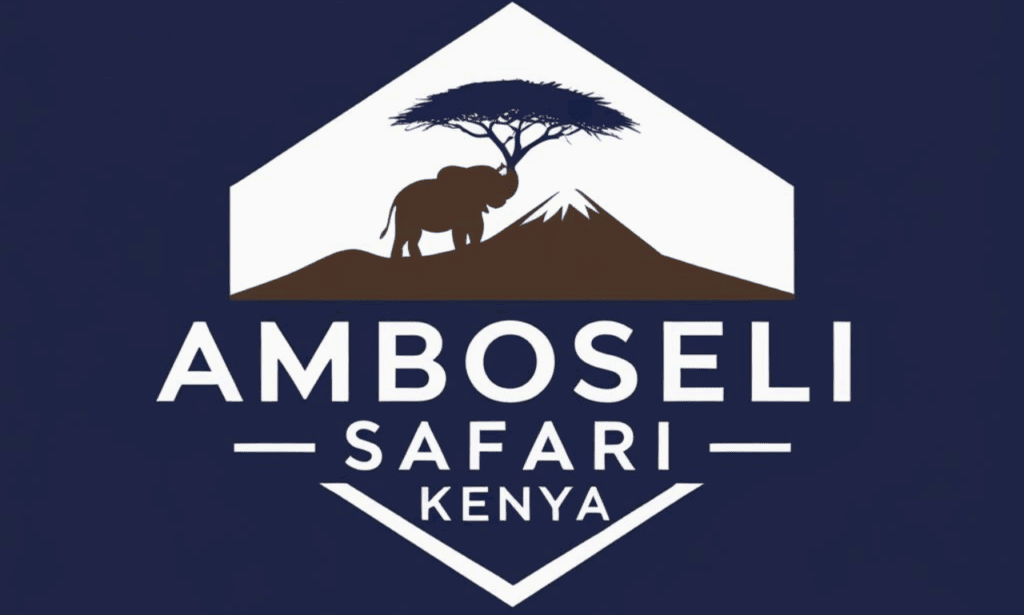What are the main activities offered in Amboseli National Park?
Amboseli National Park, located in Kenya, is one of the most popular safari destinations in Africa. It offers a variety of activities for visitors to enjoy, all centered around its rich wildlife, scenic landscapes, and cultural experiences. One of the main activities is game drives. Game drives allow visitors to explore the park in a safari vehicle while getting close to animals like elephants, lions, giraffes, zebras, and cheetahs in their natural habitats. These drives typically happen early in the morning or late in the afternoon when the animals are most active, making it the best time for exciting encounters.
Another popular activity is observing the breathtaking views of Mount Kilimanjaro, Africa’s highest mountain. Amboseli is famous for its stunning scenery, where you can see wildlife roaming around with the towering Kilimanjaro as a backdrop.
If you’re a bird lover, birdwatching is another highlight, as the park is home to over 400 bird species, including flamingos, herons, and pelicans, especially around its swamps and wetlands.
Cultural visits to local Maasai villages are also a must-do for those seeking to learn about the vibrant traditions, stories, and daily lives of the Maasai people, who have lived in harmony with nature for generations.
In addition to these, photography is a big draw here. Amboseli is known as a photographer’s paradise, with opportunities to capture stunning images of wildlife and landscapes under the golden African sun. Whether you’re a seasoned photographer or just enjoy snapping pictures, Amboseli delivers incredible sights.
In summary, the main activities include game drives, birdwatching, photography, Maasai cultural experiences, and enjoying the iconic views of Mount Kilimanjaro. Each activity offers a unique way to connect with the park’s beauty and biodiversity.

What wildlife can be observed during a safari in Amboseli?
Amboseli National Park is a favorite destination for wildlife enthusiasts because it’s home to an impressive variety of animals. One of the highlights is the large population of African elephants. Amboseli is famous for being one of the best places in the world to see wild elephants up close. You’ll likely spot large herds walking through the park or bathing at the swamps. This makes it ideal for anyone fascinated by these gentle giants.
In addition to elephants, Amboseli has all the “big cats,” including lions, cheetahs, and leopards. Lions are often seen lounging or patrolling their territories, while cheetahs are known for their speed and might be seen chasing prey across the open plains. Leopards, though shy and elusive, occasionally make an appearance, usually in the early morning or evening.
Other commonly observed animals include zebras, giraffes, wildebeests, hippos, buffaloes, and antelope species like impalas and gazelles. The park also has spotted hyenas, jackals, and warthogs, which might be spotted during your safari.
If predators and herbivores aren’t enough, bird enthusiasts can look for flamingos, crowned cranes, African fish eagles, pelicans, and many other species. Amboseli’s wetlands and swamps make it a haven for birds, offering mesmerizing sights, especially for bird lovers.
For visitors who are lucky, Amboseli might offer sightings of rarer animals like caracals (small wild cats), servals (spotted cats), or even honey badgers. This makes every safari feel like an adventure because you never know what you’ll find.
In summary, Amboseli is teeming with wildlife! From elephants and lions to zebras and hundreds of bird species, the park is perfect for spotting a wide range of animals in their natural environment.
Are guided game drives available in the park, and how do they work?
Yes, guided game drives are available in Amboseli National Park, and they’re one of the best ways to experience the park’s wildlife and scenery. Guided game drives involve professional safari guides who drive visitors through the park in specially designed safari vehicles while providing expert insights about the animals, plants, and landscapes.
Here’s how these drives work: Visitors can book a game drive through their lodge, camp, or tour operator when planning their trip. Many lodges in Amboseli offer game drives as part of their packages. Whether you are staying at a luxury camp or a budget-friendly lodge, there’s almost always an option for a guided game drive.
The drives are typically scheduled for early morning (around sunrise) or late afternoon (before sunset), as this is when animals are most active and you stand the best chance of spotting them. Midday game drives are less common because of the hot sun, which often makes animals retreat to the shade.
During the game drive, the guide will take you along carefully planned routes to increase the likelihood of spotting animals. They will explain the behaviors you’re observing, tell you about the ecosystem, and answer any questions. For example, if you see a herd of elephants, your guide might share details about their family dynamics or habits. If a predator like a lion is spotted, you’ll learn about its hunting strategies. This is the essence of Kenya safaris.
Some safari vehicles are open-sided for better views, while others are enclosed with large viewing windows. Binoculars and cameras are highly recommended!
Guided game drives are especially great for first-time visitors since the guides know the best locations to find animals and have lots of fascinating knowledge to share. These drives are safe, informative, and perfect for enjoying Amboseli to its fullest.
Can visitors explore Amboseli on foot, and are there walking safaris?
Yes, visitors can explore Amboseli on foot, and there are walking safaris available, though these are not as common as game drives. Walking safaris are conducted with professional guides and armed park rangers to ensure safety since Amboseli is home to dangerous wildlife like elephants, lions, and buffalo. Walking safaris often take place in designated areas outside the park or in conservancies, which are safer spaces with fewer predators. These safaris offer visitors a unique and intimate experience of nature compared to staying inside a vehicle.
Being on foot slows everything down and provides the opportunity to notice the smaller but fascinating details of the bush, such as animal tracks, plants, insects, and even smells that you might miss during a game drive. You could find yourself learning how to identify the tracks of an elephant or discovering how the Maasai use certain plants for healing.
For example, walking near wetlands or open fields gives you a chance to see animals like zebras or giraffes in a more grounded way, without the hum of an engine. It’s also an excellent way to take in breathtaking panoramas of Mount Kilimanjaro from less-touristy spots. Visitors should always follow the rules and listen carefully to guides during walking safaris to avoid startling animals or putting themselves at risk.
Keep in mind not all visitors may be comfortable or eligible for walking safaris, for instance, they may be limited to adults or older children and might require a certain level of fitness. If exploring on foot excites you, ask your lodge or tour operator about arranging a walking safari before your visit.
What is the best time of year to visit Amboseli National Park for activities?
The best time to visit Amboseli National Park is during the dry seasons, which are from June to October and late December to February. Why? Because during the dry season, the vegetation is less dense, making it much easier to spot wildlife. Additionally, animals are more predictable in their behavior during this time because they gather near water sources like the park’s wetlands and swamps.
For example, if you want to see elephants (Amboseli is famous for its large elephant herds), the dry season is perfect because they often roam in big groups near the marshes. Other herbivores like zebras, wildebeest, and giraffes are also more easily spotted, along with the predators like lions and cheetahs that hunt them.
The dry season is also a great time for photography since skies tend to be clear, and you’ll catch fantastic views of Mount Kilimanjaro. Early mornings and evenings are particularly scenic, with the mountain’s snow-capped peak glowing in the soft light.
On the flip side, the wet seasons (March to May and November) bring heavier rain, which makes roads muddy and some areas more difficult to access. While it isn’t ideal for safaris, the wet season does have its own charm: the park turns lush and green, birdwatching opportunities soar with the arrival of migratory species, and animal babies are born during this period. However, you should be prepared for more challenging travel conditions if visiting during this time.
For most visitors, though, the dry season remains the most convenient and rewarding time to visit Amboseli for activities like game drives, walking safaris, or cultural tours.
Are there cultural tours or visits to local Maasai villages offered?
Yes, cultural tours and visits to Maasai villages are a popular activity for visitors to Amboseli National Park. The Maasai people are among Kenya’s most well-known and traditional communities, and they have lived around Amboseli for centuries. By visiting a Maasai village, tourists get the chance to learn firsthand about their rich culture, daily lives, and traditions.
During these tours, visitors are warmly welcomed into the village, often with dances or songs performed by the Maasai. These performances are a way to share their heritage, and it’s an incredibly vibrant and colorful experience. You’ll notice the stunning beadwork and traditional attire worn by the Maasai, which is often red, symbolizing strength and bravery.
You can also visit Maasai homes, called “manyattas,” which are small huts made of mud, sticks, and cow dung. A guide (often a Maasai member) will explain how these homes are constructed and share insights into family life. Many tours also include a visit to the cattle enclosures, as cattle are central to Maasai life, providing food, status, and wealth.
Additionally, you’ll learn about the Maasai’s relationship with the land and wildlife. It’s fascinating to hear how they coexist with elephants and lions around the park. They’ll share stories of their traditional practices, including how they navigate issues of wildlife conservation. You might be invited to participate in activities such as spear-throwing or fire-making demonstrations.
Before you leave, there’s often an opportunity to buy handcrafted souvenirs like jewelry, beadwork, or wooden carvings directly from the Maasai women, offering you a chance to support their community.
Cultural visits are a wonderful way to complement your safari and experience a deeper connection to Kenya’s heritage, so most Amboseli tours and lodges include them as an optional activity.
What birdwatching opportunities are available in Amboseli?
Amboseli National Park is a fantastic destination for birdwatching, offering opportunities to see over 400 bird species. That’s a huge variety! The park’s diverse ecosystems – including wetlands, open plains, acacia woodlands, and dry savannah – provide the perfect habitats for different kinds of birds. If you’re a bird lover, you’ll find birds that are there year-round (called resident birds) as well as migratory birds that visit during specific seasons.
One of the best birdwatching spots in Amboseli is near the park’s swamps and wetlands. Birds love being near water, so you’ll find water-loving species like the African jacana, wading in the shallow waters, and the grey heron, patiently fishing on the edges. You might also spot flamingos in the park’s seasonal lakes during certain times of the year – their bright pink feathers are impossible to miss!
Other common bird species include weaver birds (known for their intricate nest designs), hornbills, crowned cranes, and colorful kingfishers. Raptors like eagles, vultures, and hawks also patrol the skies, adding a dramatic wildlife element to the birdwatching experience.
Visitors can rent binoculars and go on guided tours where experts help identify the different birds and teach you about their habits. The best time for birdwatching is during the wet season (from October to May), as more migratory birds are there, and the landscape is lush, attracting even more species. Whether you’re a casual observer or a serious birdwatcher, Amboseli offers a fantastic experience!
Can visitors climb or view Mount Kilimanjaro from the park?
While visitors cannot climb Mount Kilimanjaro directly from Amboseli National Park (because the mountain is in Tanzania, not Kenya), they can enjoy stunning views of Mount Kilimanjaro from the park! Amboseli is famous worldwide for its picture-perfect scenery of African wildlife set against the backdrop of Kilimanjaro’s snow-capped peaks. Think about an elephant walking across the savannah with Kilimanjaro towering behind it, that’s the iconic Amboseli photograph.
The best chance to see Kilimanjaro clearly is during the early morning or late evening when there’s less cloud cover. Throughout most of the day, clouds often obscure the peak, but photographers and visitors wake up early to capture that magical view. You wouldn’t want to miss it!
If you are interested in climbing Mount Kilimanjaro itself, you would need to travel to Tanzania and go to one of the mountain’s base camps. While climbing the mountain is challenging, Amboseli is a more relaxed option that lets you enjoy the sight of Kilimanjaro from afar without doing the actual hiking.
For photographers, the view of Kilimanjaro combined with Amboseli’s wildlife (like elephants, giraffes, and zebras) provides some of the most beautiful and memorable moments you can capture in East Africa. It’s worth bringing a good camera or even booking a photography tour to make the most of it.
Are there options for photography-specific tours or workshops?
Yes, Amboseli National Park is a dream for photographers, and there are several options for specialized photography tours and workshops. These tours are designed to help beginners and professionals alike capture the incredible wildlife, landscapes, and the iconic view of Mount Kilimanjaro. Amboseli is known as one of the best locations in the world for photography, thanks to its open plains, dramatic mountain backdrop, and abundance of animals.
On a photography-specific tour, professional wildlife photographers or guides often accompany small groups. They provide tips on framing your shots, capturing animals in action, and using natural light effectively. For instance, they might help you shoot a close-up of a lion at sunrise or a herd of elephants walking beneath a glowing Kilimanjaro at sunset. These tours might even take you to lesser-visited spots in the park to get unique angles and avoid tourist crowds.
Most photography workshops in Amboseli use safari vehicles modified especially for photographers. These vehicles might lack a roof, have additional camera mounts, or allow you to sit closer to the ground for unusual perspectives. Whether you’re using a fancy DSLR camera or just a smartphone, you’ll be able to take breathtaking shots of wildlife like zebras, buffalo, and cheetahs.
Additionally, some lodges and camps in Amboseli offer in-house photography packages. These could include lessons on editing, tips on choosing lenses, or group discussions about each person’s best shots from the day.
Photography enthusiasts visit Amboseli year-round, but the dry season (June to October) is especially good for clear skies and dramatic animal migrations. If you’re serious about wildlife or nature photography, Amboseli will not disappoint!
Are there any water-based activities, such as visiting wetlands or swamps?
Yes, Amboseli National Park offers water-based activities that revolve around its unique wetlands and swamps. The park is famous for its expansive marshes like the Enkongo Narok and Olokenya Swamps, which are fed by underground rivers from Mount Kilimanjaro. These wetlands are not just vital for the park’s ecosystem but also critical for providing visitors with a unique wildlife-watching experience.
While the activities aren’t water-based like canoeing or boating (since these are not practical in Amboseli), they still center on exploring the biodiversity supported by these wetlands. A safari through these marshy areas offers visitors a chance to see animals like elephants cooling off in the water, hippos wallowing in the mud, and hundreds of different bird species that rely on the wetlands for food and nesting.
For example, you might drive through the swampy areas during a game drive and witness elephants wading through shallow waters with numerous bird species like herons, pelicans, or kingfishers perched nearby. These spots also attract some predators like lions and hyenas that lurk nearby, waiting to ambush prey.
If you enjoy birdwatching, the wetlands provide excellent opportunities to see aquatic birds, especially during the rainy season when the water levels rise and the bird population increases.
So while you won’t engage in traditional water-based activities like kayaking, exploring these ecosystems as part of a guided game drive can be fascinating and quite rare in wildlife safaris. Think of these wetlands as “watering holes” where most of the ecosystem congregates, making it the perfect place for breathtaking wildlife observations and photography.
What accommodations provide easy access to park activities?
Amboseli National Park has a range of accommodations that cater to different types of travelers, from luxury lodges to budget-friendly campsites, and most of these are located just inside or very close to the park’s gates. These accommodations make it easy for visitors to access popular park activities like guided game drives, cultural Maasai tours, and wildlife viewing around the wetlands.
One notable example is Ol Tukai Lodge, one of the most famous places to stay within the park. It’s ideal for those who want unbeatable access to both wildlife and incredible views of Mount Kilimanjaro. It’s located right in the middle of the park, so you don’t waste time commuting from outside. Plus, it’s very comfortable and great for families, photographers, and couples, offering on-site amenities like a pool and knowledgeable guides for safaris.
Another popular choice is Amboseli Serena Safari Lodge, located near the heart of the park. This lodge provides luxury accommodations and is great for early morning game drives because of its strategic position. It’s famous for its cultural elements too, such as Maasai-themed decor, allowing guests to immerse themselves in the local culture.
For budget travelers, there are several campsites such as Kibo Safari Camp or Kimana Camp, which are located just outside the park’s gates but still offer easy access to the main activities. These campsites blend affordability with proximity to Amboseli’s attractions.
Choosing accommodation near the park ensures you can start your safari early in the morning when animals are most active and enjoy shorter transit times. Most lodges and camps also organize guided activities directly for their visitors, saving you the time and hassle of organizing your own itinerary.
Are there any family-friendly activities or educational programs in the park?
Absolutely! Amboseli National Park is very family-friendly and provides several activities and educational opportunities tailored for visitors of all ages. Whether you’re traveling with young kids, teenagers, or multi-generational families, there’s something for everyone.
One of the most family-friendly activities is the guided game drive. These safaris allow families to get up close to iconic African wildlife like elephants, giraffes, lions, and zebras. The drives are conducted in well-equipped safari vehicles, making it safe and comfortable for children. Guides also explain interesting facts about the animals, their behavior, and their habitats in an engaging way, making it like an outdoor classroom for kids and adults alike.
For a cultural experience, families can visit the local Maasai villages around Amboseli. These tours are fantastic for children, as they can meet Maasai people, learn about their customs, hear local folk tales, and even participate in activities like traditional dances. It’s both fun and educational, providing a broader understanding of life outside the park.
Birdwatching is another low-key activity that families can enjoy together, especially in the wetlands. Kids can spot colorful birds like flamingos, pelicans, and African jacanas while learning about their migratory patterns. The park is also home to an impressive diversity of bird life, which makes it easy for beginner birders to get involved.
Many accommodations, such as Ol Tukai Lodge or Kibo Safari Camp, also include family-friendly amenities, like pools, kid-friendly menus, and guides who are skilled at keeping children entertained. These lodges often host talks from conservation experts, providing families an educational insight into wildlife preservation and the importance of Amboseli’s ecosystem.
So whether it’s spotting animals, meeting Maasai villagers, or learning about nature, families can truly enjoy Amboseli while creating unforgettable memories together.
